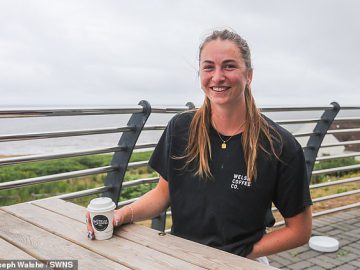After years or decades living on the streets or in shelters, adults who have experienced chronic homelessness are typically much sicker than their housed peers.
But a partnership at Fort Worth’s largest permanent supportive housing project, Casa de Esperanza, has helped reverse that trend. Casa de Esperanza opened in 2020, and provides 119 chronically homeless adults with a permanent home. But the apartment complex offers residents more than just a key and a lease: Residents also have access to two community health workers, who help the residents manage their health needs.
The residents at Casa de Esperanza have seen a notable improvement in their health, as measured by the number of times they’ve needed to visit the JPS emergency room. In Casa’s first 28 months of operation, emergency room visits among residents dropped 48% compared to what was expected, according to data from JPS Health Network.
At the heart of this improvement, JPS leaders said, are two JPS community health workers who work at Casa de Esperanza and help its residents navigate life after homelessness.
“The CHW role is really the unsung hero in how this works,” said Joy Parker, a senior vice president at JPS who leads the health network’s community health division.
Kerry Aguillard and Shalese Bragg work out of a dimly lit office on the ground floor of Casa de Esperanza. They operate with an open door policy, and there’s always music playing so the space feels inviting. The soundtrack usually varies between a relaxing lo-fi beat that Bragg will find on YouTube, or, to cater to the residents’ musical tastes, ‘80s music. The goal, Bragg said, is making residents feel welcome.
Aguillard sums up his job simply: Ask patients what they need. Then, help them meet that need.
Sometimes, that’s helping a patient get a phone or an iPad so they have a way to use telehealth.
Other times, it can be as simple as knocking on a patient’s door. If Aguillard hasn’t seen a resident in a while, he and Bragg will make the rounds of the apartment complex, checking in on everyone. Once, Aguillard said, he knocked on a resident’s door and asked how he was doing. To Aguillard’s surprise, the resident said he wanted to quit smoking, and asked if Aguillard could help him. Aguillard got the patient an appointment with his doctor, where the patient discovered he had high blood pressure that needed immediate treatment.
Now, that resident has quit smoking and is working to control his blood pressure, Aguillard said.
Another patient asked for a friend to exercise with after he was diagnosed with diabetes. Aguillard and Bragg started a walking group to keep the man company. The walking group has now grown, and anyone who wants to get a little exercise can meet on Tuesdays and Thursdays to walk a mile.
Community health workers like Bragg and Aguillard have been working in the U.S. for decades, but health systems and nonprofits have been hiring them in greater numbers in recent years. CHWs, also know as promatoras de salud, have proven have significant impact on people’s health, particularly populations that have a harder time navigating the health care system, grapple with below average health, or both.
Bragg and Aguillard have seen this trend firsthand. They estimate at least two dozen residents have moved on from Casa de Esperanza as their lives have progressed and they feel more comfortable navigating life after homelessness.




